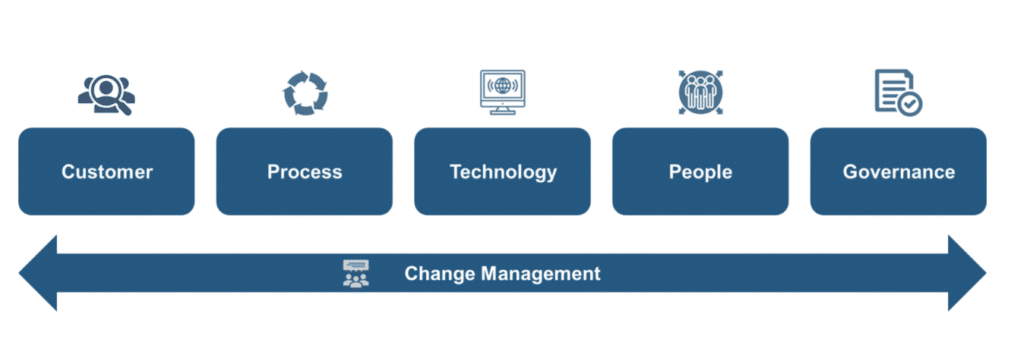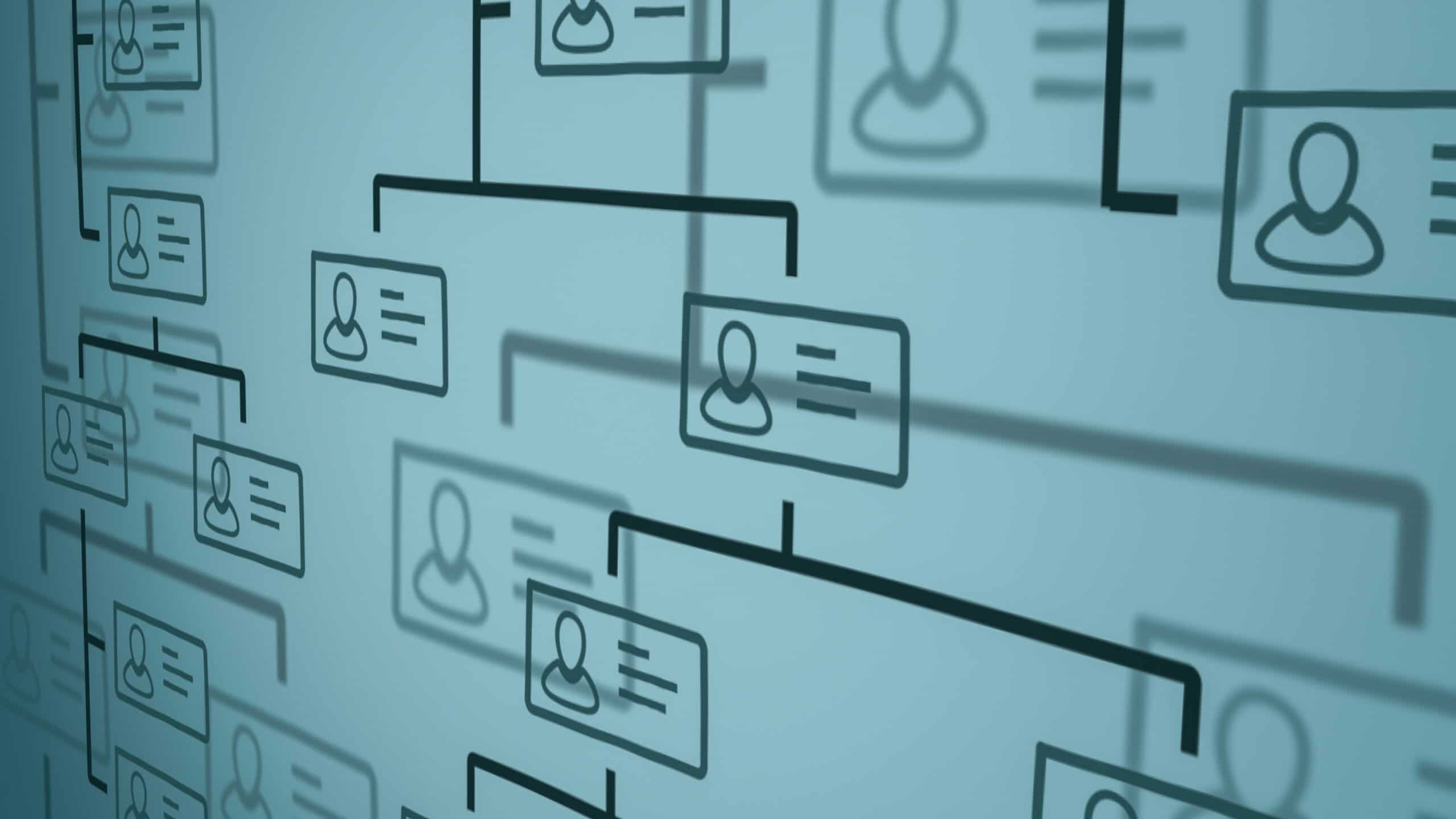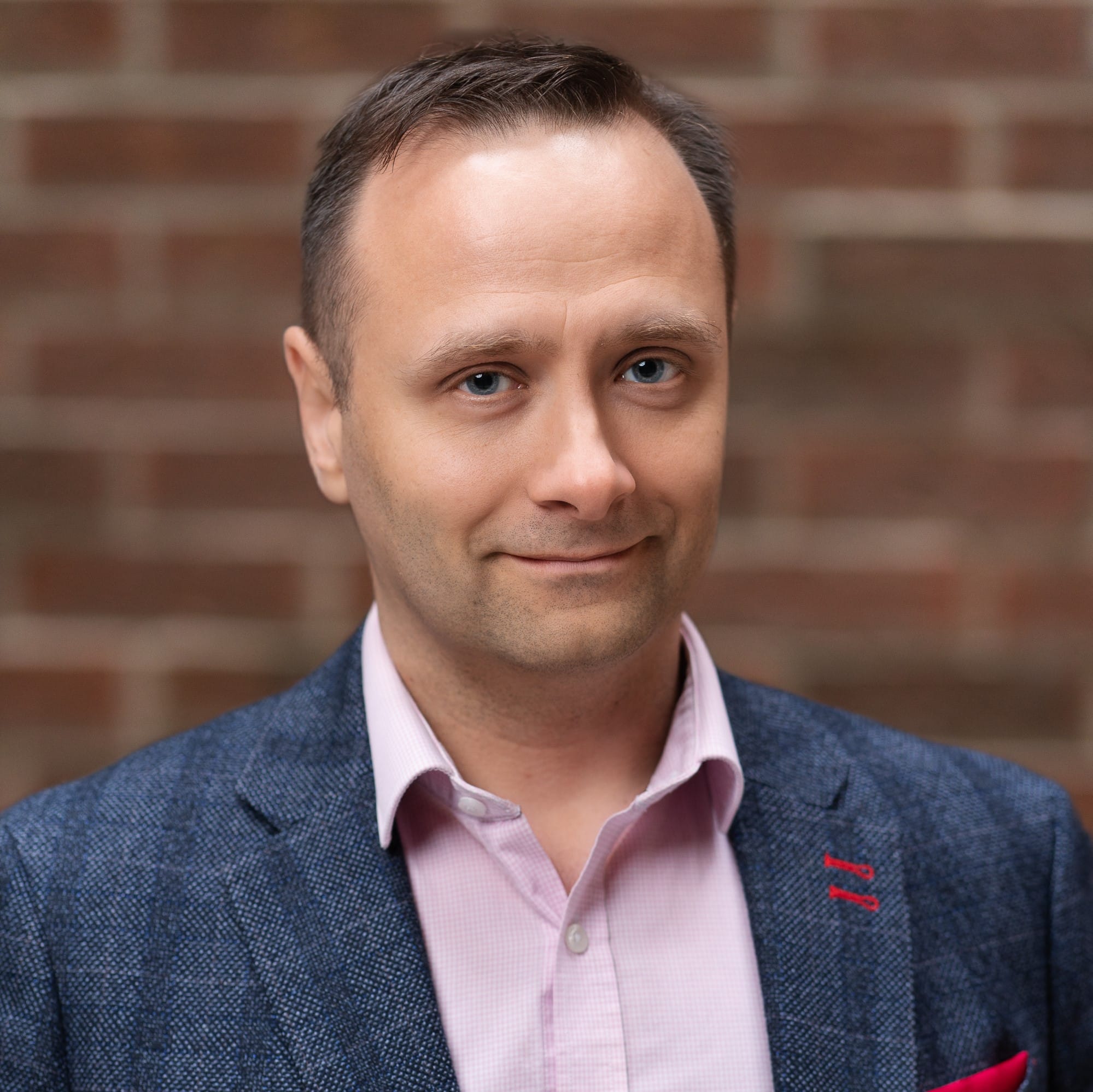Whether you are launching a new venture, refreshing your strategy, or addressing persistent performance challenges, a well-designed target operating model (TOM) provides the clarity and structure to move forward with confidence. Burnie Group helps cut through organizational complexity to design a TOM that aligns people, processes, technology, and governance, all while managing change – enabling streamlined operations, better customer and employee experiences, and long-term growth.
Our target operating model consulting approach

We leverage a robust framework to ensure all elements of your business are considered during our TOM design work. This includes:

1. Customer: Define how you deliver value to consistently provide an exceptional customer experience.
Areas of focus
- Customer segmentation
- Customer journey mapping
- Customer relationship and leads management
- Omnichannel design

2. Process: Streamline and standardize processes to reduce cost and complexity, eliminating unnecessary handoffs and rework while continuously improving.
Areas of focus:
- Process standardization and redesign
- Standard operating procedure documentation
- Enablement of Continuous Improvement practices
- Application of Lean and Six-Sigma frameworks

3. Technology: Leverage technology to transform the way an organization operates.
Areas of focus:
- Application landscape review and redesign – “right tools for the job”
- Design and implementation of core technologies
- Workflow tools
- Workforce management
- Intelligent Automation
- Agentic AI
- CRM
- Technology implementation project management

4. People: Ensure you have the right people in the right roles, with appropriate skills and training.
Areas of focus:
- Organization design (structure, size)
- Roles and responsibilities review, including decision rights (e.g., RACI)
- Talent assessment
- Skills, training and coaching development

5. Governance: Establish oversight and reporting at the right cadence to enable strong decision-making and drive results.
Areas of focus:
- Performance management
- Service level agreements review
- Decision making and communication
- Reporting and transparency
Change management: We embed change management throughout every stage of the TOM journey, aligning leadership, building a compelling case for change, and equipping teams with the tools, training, and support needed to adopt new ways of working.
Our target operating model consulting methodology

We tailor each engagement to your unique needs, using a proven, phased methodology that quickly surfaces challenges, uncovers root causes, and translates them into actionable solutions. While every project is customized, most follow a structured set of phases from diagnosis through execution:

1. Current state assessment: Existing operating model.This is our opportunity to work closely with you to learn about your organization and compile the necessary fact base to understand your current priorities and guide future state design. This phase typically lasts from 3-6 weeks, depending on the overall project scope, complexity, and starting point. Our work during this time involves:
- Understanding your business, including value proposition, strategic objectives, customer segments, geographies, channels, partnerships etc.
- Assessing your current operating model against the dimensions of our operating model framework and documenting known pain points and opportunities
- Interviewing and surveying leadership and key stakeholders
- Reviewing and assessing available documentation (e.g., corporate and growth strategy, current project portfolio and estimated ROI, organization charts and reporting structures, process maps, etc.)
- Facilitating a current state assessment workshop to review key findings and align on top opportunities for improvement
- Developing guiding principles for the target operating model design

2. Target operating model design:Following our current state assessment, we will deep dive into building out the target state operating model. The scope and duration of this phase are determined by your specific needs and can range anywhere from 3-4 weeks to multiple months. Our work during this time may include elements such as:
- Mapping process improvement opportunities across the value chain
- Developing the target state organizational structure
- Laying out the high-level technology landscape of IT applications and supporting infrastructure
- Creating a ‘skills inventory’ of required capabilities and identifying key gaps
- Determining the optimal channel mix to reach all customer segments
- Designing the target state locations footprint and facilities layout
- Defining decision rights across the organization (e.g., RACI matrix: responsible, accountable, consulted, and informed)
- Aligning on the optimal partner matrix for outsourcing
- Developing a balanced scorecard to measure and manage performance
- Building a financial model to quantify required investments and the potential impact of the target state design

3. Target operating model roadmap: Once we develop a blueprint for your solution, we will work with you to prepare a path from the current to the future state. This phase typically lasts 1-3 weeks and involves:
- Defining clear workstreams, milestones, timelines, and accountability to get to target state
- Setting up reporting and tracking against milestones and setting the cadence for project execution
- Identifying key project risks, potential impact, and mitigation options
Once the TOM roadmap is designed, you will be ready to begin moving ahead with solution implementation. For this, many of our clients choose to continue working with us to leverage our expertise in project planning, change management, and project governance. We will work with you to determine the level of support required, and if needed, define a separate project scope for solution implementation.

4. Target operating model implementation: Our consultants bring many years of industry expertise and a track record of delivering and sustaining transformational change with our clients. We will work with you to define the scope of support required to make your implementation a success. This may include:
- Project management: Managing the mechanics of implementation delivery, including initiation & timeline planning, day-to-day execution, stakeholder management, budgeting, risk management, quality assurance, status reporting, and closure
- Change management planning: Leveraging our change management framework to develop a comprehensive and structured plan to help manage your people through organizational change
- Problem solving support: Additional intellectual horsepower to address and breakthrough roadblocks encountered throughout the implementation lifecycle
- Training and capability building: Upskilling staff to ensure the smooth transition and sustainment of the implemented solution
Target operating model and omnichannel
Today, customers often prefer to be served across multiple channels, such as in-person, contact center, online, mobile, and text, and want the flexibility to choose which channel they use for different needs. For example, they may want to resolve simple issues or get quick answers online but prefer to call or visit in person for more complex matters.
Designing an effective Target Operating Model requires a thorough assessment of the capabilities available through each channel and the proactive use of technology to support them. In many cases, this approach is also more cost-effective. Our consultants will help you evaluate how your current operating model supports customer journeys across various channels and design a target omni-channel operating model that enables seamless transitions between channels.
Why choose Burnie Group
- Burnie Group brings extensive experience in optimizing and designing target operating models across several industries including financial services, software and technology, and healthcare
- We bring senior leaders directly into every engagement, ensuring clients benefit from both deep expertise and practical experience
- We focus on doing what’s right, not what’s easy—helping leaders make bold, sometimes difficult, choices that create sustainable value
- We deliver and track growth and cost benefits from operating model changes throughout the engagement, ensuring the new model creates measurable impact and long-term value
- We help organizations improve both customer and employee experience by aligning processes, roles, and technologies to reduce friction and enhance engagement
- We simplify operations and streamline processes across the value chain, creating leaner, more transparent structures that enhance consistency, accountability, and performance
- We support rollout and implementation by coordinating changes across people, processes, technology, and governance, while tracking adoption, measuring performance, and embedding practices that ensure the target operating model delivers sustained results
Our insights on operations
Learn more about how a target operating model can improve your operations.
CONTACT US







